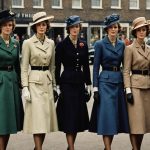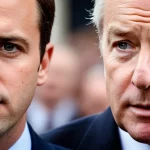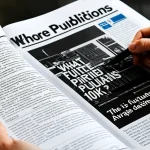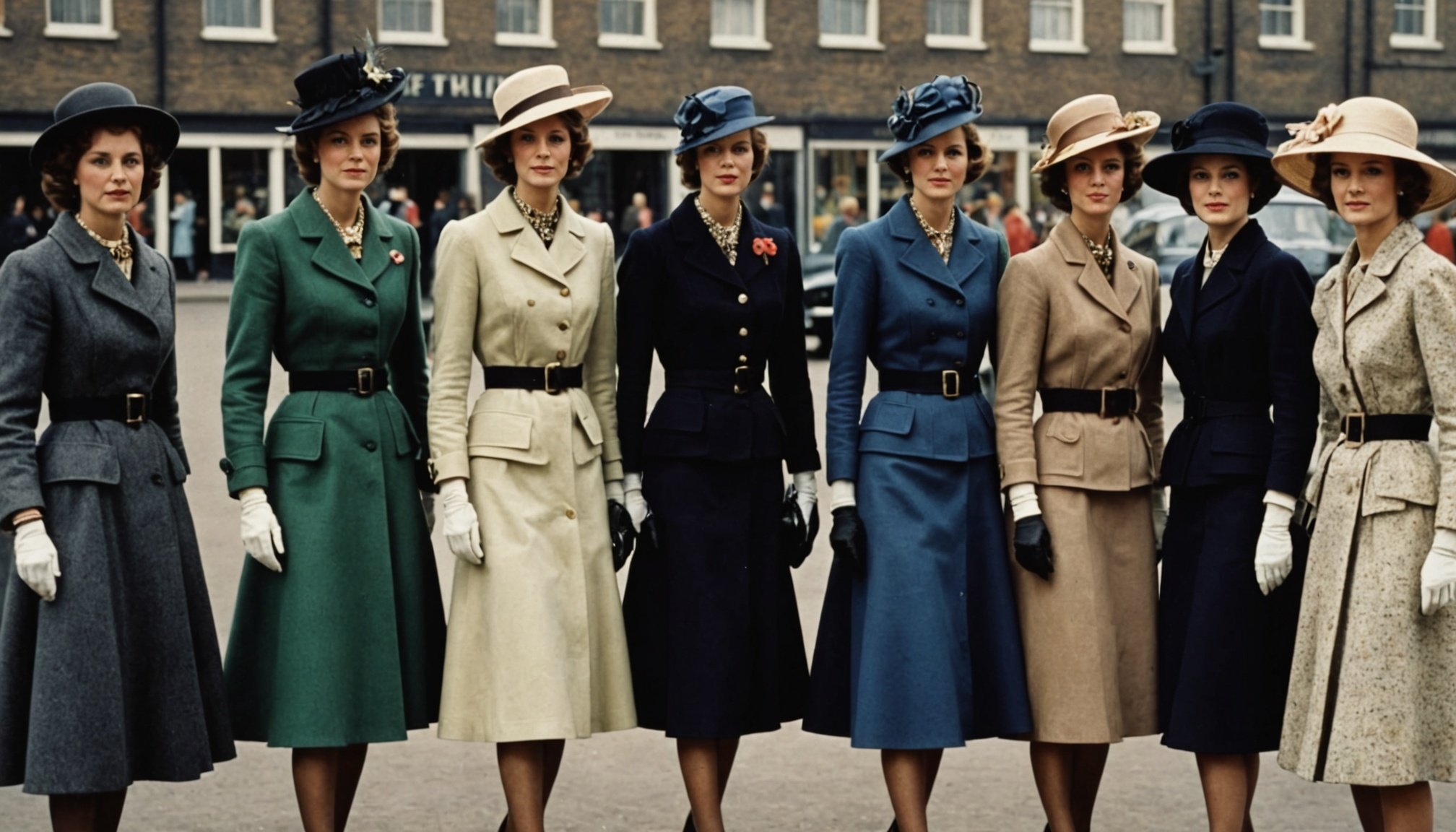Decade-by-Decade Overview of British Women’s Fashion
Tracing the British women’s fashion history from the 1920s to the 2020s reveals a fascinating journey of transformation shaped by cultural, social, and economic forces. Each decade introduced distinct decade trends that reflected the spirit of the times, defining both high fashion and everyday wear.
In the early 20th century, the 1920s flapper dresses symbolized liberation, breaking away from restrictive forms. The 1930s softened silhouettes with elegance, while the 1940s wartime influence emphasized utility and practicality in clothing due to rationing.
Also read : How Can UK Women’s Fashion Impact Confidence Levels?
Fast forward to the postwar 1950s and 1960s, fashion celebrated glamour and youthful rebellion, with the mini-skirt popularized by designers like Mary Quant. The 1970s and 1980s brought boldness and individualism, from punk aesthetics to power dressing, expressing personal identity through eclectic styles.
The 1990s and 2000s embraced minimalism and the rise of streetwear, heavily influenced by pop culture and emerging fast fashion trends. Most recently, the 2010s and 2020s have seen a shift toward sustainability and the digital revolution, blending heritage British designs with global, ethical influences.
Also to see : Indulge in quality yarns at your local wool shop today
This continuous fashion evolution highlights how British women’s fashion adapts while honoring its rich legacy.
The 1920s to 1940s: Changing Silhouettes and Social Shifts
British women’s fashion history in the 1920s was marked by the dramatic rise of flapper dresses. These garments featured loose, drop-waist silhouettes that contrasted sharply with previous restrictive styles, allowing greater movement and symbolizing women’s growing social freedom. The era embraced Art Deco influences, with geometric patterns and luxurious fabrics reflecting modernity.
Moving into the 1930s style, British fashion softened. Hemlines dropped, and there was a return to more structured, feminine shapes. Bias-cut gowns showcased elegance and sophistication, often designed for both high fashion and everyday wear, responding to economic challenges while maintaining glamour.
The 1940s British fashion was profoundly shaped by wartime rationing. Utility dresses became prevalent, characterized by simple, practical designs that conformed to government restrictions on fabric and embellishments. This period’s fashion evolution prioritized functionality without abandoning style, with clever tailoring and minimalistic details ensuring women looked polished amid austerity.
Each decade combined distinct cultural shifts with evolving social roles, creating a dynamic progression in British women’s fashion history from liberation to resilience.
The 1950s and 1960s: Postwar Glamour and Youthquake
The 1950s fashion icons redefined British women’s fashion history with a return to femininity after wartime austerity. Dior’s “New Look” inspired full-skirted silhouettes and cinched waists, emphasizing elegance and grace in everyday wear and high fashion alike. This decade’s fashion evolution celebrated glamour, with soft fabrics and pastel hues dominating wardrobes.
Moving into the 1960s British style, the emergence of youth culture dramatically altered decade trends. The Mod movement propelled the mini-skirt into mainstream fashion, made famous by designer Mary Quant. This fresh, bold look reflected a break from traditional norms and symbolized youthful rebellion and freedom.
Both decades balanced innovation and tradition, blending high fashion with accessible streetwear influences. British designers and pop culture stars played pivotal roles in shaping these styles. As a result, the 1950s and 1960s stand out as transformative eras in British women’s fashion history, where elegance met revolution, and clothing became a powerful form of self-expression.
The 1970s and 1980s: Individualism and Bold Statements
The 1970s British fashion scene was defined by its eclectic mix of styles, reflecting a broader cultural shift toward individualism. Contrasting trends like disco glamour and bohemian ease coexisted with the rebellious punk style, marked by ripped fabrics, safety pins, and vivid prints. This decade’s fashion evolution demonstrated how clothing became a tool for social and political expression, particularly for youth subcultures.
Entering the 1980s, fashion shifted toward power dressing, emphasizing strong silhouettes with padded shoulders, tailored suits, and bold colours. This style mirrored the rising presence of women in the workplace and their desire to project authority. Designer labels gained prominence, blending high fashion with mass appeal and further defining decade trends that encouraged self-expression and ambition.
Throughout these decades, British women’s fashion history captured the spirit of change. From punk’s defiance to the era’s structured glamour, clothing told stories of identity and empowerment. This period marked a significant turning point, showcasing fashion as a revolutionary language that was both personal and political.
The 1990s and 2000s: Minimalism, Streetwear, and Celebrity Influence
The 1990s minimalist style marked a sharp contrast to previous decades’ bold patterns and complexities. Clean lines, neutral palettes, and simple silhouettes defined British women’s fashion history, emphasizing understated elegance. This decade’s fashion evolution embraced casual chic, integrating sportswear elements like tracksuits and sneakers into everyday wardrobes, reflecting a growing desire for comfort and versatility.
Entering the 2000s British fashion witnessed a surge in streetwear and pop culture influence, largely propelled by celebrity icons such as the Spice Girls and renowned supermodels. Their unique, trendsetting looks shaped decade trends that blurred the lines between high fashion and mass-market appeal. For example, low-rise jeans and platform shoes became ubiquitous, driven by this cultural phenomenon.
Moreover, the 2000s saw the rise of fast fashion, enabled by technological advances in production and distribution. This period accelerated the fashion evolution by making runway trends accessible to wider audiences quickly, reshaping how British women consumed fashion. These two decades together highlight a pivotal transition toward more diverse, inclusive, and rapidly changing styles in British women’s fashion history.






